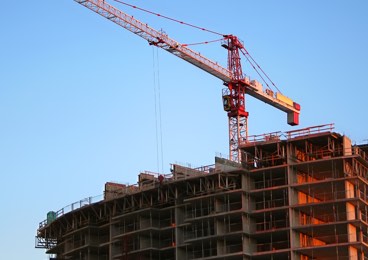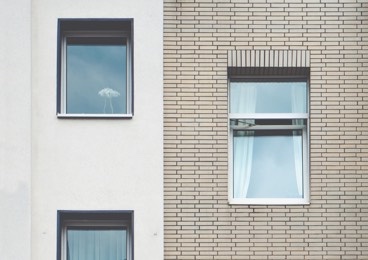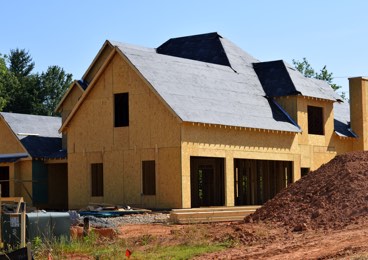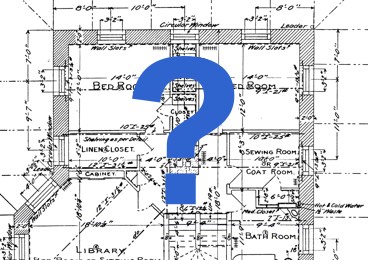We do not have monthly payment options for our online policies.
Frequently Asked Questions
Once a policy is purchased, policy changes can be made here. Please note, a $25 fee will apply to changes that result in additional premium owing.
Please review the below three categories to see if your building fits into one of the following categories:

Your building is likely Fire Resistive construction, if it meets the following criteria:
- New building (i.e. 1990 or newer)
- High rise office building and condos (over 75 ft)
- Buildings with structural steel frame that is fireproofed with masonry, concrete or other non-combustible materials
- Exterior walls made of solid masonry materials (e.g. reinforced concrete, masonry, steel)
- Roof, frame and floors concrete

Your building is likely Masonry construction, if it meets the following criteria:
- You are located in a shopping centre, strip mall, low rise office building, warehouses
- Exterior walls made of masonry materials (e.g. brick, concrete, tile, and stone
- Roof, frame and floors steel and concrete

Your building is likely Frame construction, if it meets the following criteria:
- Your office is located in a habitation type building (i.e free standing homes, low rise condos, typically 3-4 stories max
- Exterior walls made of wood, often covered with brick/stone veneer or metal attached to the wood
- Roof, frame and floors wood

If you do not think that the building you work out of fits into any of the above categories, you should choose other.
Your realtor, landlord or property manager should also be able to confirm the construction of the building.
No, unfortunately if you own the building you work out of, you will not be eligible to obtain insurance online. We can assist you with obtaining a quote through our office offline. Please contact our office and someone will contact you to arrange a quote.
This does not apply if you are working from a home office and the home is personally owned by you. Note that this coverage does not replace the need for homeowners insurance, and this coverage does not apply to your personal liability exposure, only the liability exposure related to your home office.
This policy does not insure property at locations which are known by the “Insured” to be vacant, unoccupied or shut down for more than thirty (30) consecutive days.
Yes, we can still arrange a quote for you. It just means that we can’t provide a quote for you online. Please contact our office and someone will contact you to arrange a quote.
The realtor that leased the space should be able to confirm the square footage of your office. If they do not have this information, the property manager or landlord should be able to also provide this detail. It is acceptable to be within 5% of the actual figure.
The realtor that leased the space should be able to confirm when the building was built. If they do not have this information, the property manager or landlord should be able to also provide this detail.
This is a clause in an insurance policy requiring an insured to carry a certain percentage (usually 80, 90 or 100%) of insurance in relation to the value of the property insured. The insured shares in losses to the extent that he is underinsured at the time of loss. Under the terms of this clause, property must be insured in an amount equal to or exceeding 80% of its insurable value. Failure to do so will result in a penalty in the event of a loss. The manner in which the 80% co-insurance clause would operate is illustrated in the following hypothetical example.
Example:
A) Property of Every Description (POED) is insured on a replacement cost basis for $60,000.
B) Actual cost to replace the POED is $100,000.
C) Minimum amount of insurance required to satisfy the 80% co-insurance clause is $80,000. (80% of B)
D) Amount of loss $50,000.
Application of co-insurance clause:
FORMULA:
Amount of insurance carried X Amount of loss = Recovery
Amount of insured required
$60,000. (A) X $50,000 (D) = $37,500
$80,000. (C)
This example clearly illustrates the necessity of insurance to value as the insured would only receive $37,500 of the $50,000 loss from the insurance company. Note the amount of recovery never exceeds the amount of insurance carried. For this reason it is important to insure for 100% of the insurable value in order to have enough coverage in the event of a total loss.
Manufacturing options involve the production of products using labour and machines, tools, chemical and biological processing or formulation.
Replacement Cost: Replacement Cost is the cost of replacing, repairing, construction or reconstruction (whichever is less), the insured property with new property of like kind and quality and for like occupancy without deduction for depreciation. The equipment insured under the Workplace Insurance program will be valued at replacement cost in the event of an insured claim.
The policy is subject to an 80% Co- Insured Clause. This is a clause in an insurance policy requiring an insured to carry a certain percentage (usually 80, 90 or 100%) of insurance in relation to the value of the property insured. The insured shares in losses to the extent that he is underinsured at the time of loss. Under the terms of this clause, property must be insured in an amount equal to or exceeding 80% of its insurable value. Failure to do so will result in a penalty in the event of a loss. The manner in which the 80% co-insurance clause would operate is illustrated in the following hypothetical example.
Example:
A) Property of Every Description (POED) is insured on a replacement cost basis for $60,000.
B) Actual cost to replace the POED is $100,000.
C) Minimum amount of insurance required to satisfy the 80% co-insurance clause is $80,000. (80% of B)
D) Amount of loss $50,000.
Application of co-insurance clause:
FORMULA:
Amount of insurance carried X Amount of loss = Recovery
Amount of insured required
$60,000. (A) X $50,000 (D) = $37,500
$80,000. (C)
This example clearly illustrates the necessity of insurance to value as the insured would only receive $37,500 of the $50,000 loss from the insurance company. Note the amount of recovery never exceeds the amount of insurance carried. For this reason it is important to insure for 100% of the insurable value in order to have enough coverage in the event of a total loss
This policy does not insure property at locations which are known by the “Insured” to be vacant, unoccupied or shut down for more than thirty (30) consecutive days.
If you have any questions regarding how your equipment will be valued, please contact our office.
This is a claim that has resulted from your company’s operations. This would include claims that resulted in an claim payout and those that were uninsured or denied.
Unfortunately, you are not eligible to purchase insurance under this program. Eligible operations are companies in the entertainment industry, including:
A locked vehicle warranty requires that for any insured property being carried in a vehicle, reasonable measures be taken to securely close the vehicle such as closing and locking doors and windows. If any loss occurs to such items as a result of theft, there must be visible signs of forced entry, such as a broken window or scratches inside of the locking mechanism. If you are not able to prove that there was forceable entry to the vehicle, the insurance company can deny the claim.
The Miscellaneous property floater offers protection for business property that is not contained at a fixed location. If you purchase this coverage, the property is covered anywhere in Canada and the continental US.
This policy does not insure property at locations which are known by the “Insured” to be vacant, unoccupied or shut down for more than thirty (30) consecutive days.
When a monitored fire alarm is triggered, a signal is sent to a central monitoring station. This station will confirm the alarm. If the alarm is confirmed they will notify the appropriate Fire Department. Only answer to yes to this question if you have confirmed with your fire alarm provider that your alarm is monitored.
PROPERTY PROTECTION SYSTEMS
The “Insured” must notify the Insurer of any change to, interruption to, flaw or defect in any sprinkler (or other fire extinguishing system), fire detection system or intrusion detection system. If you do not notify the Insurer, the Insurer is not obligated to pay for a loss that would otherwise by covered by this agreement, but only to the extent that such loss was made worse by such change, interruption, flaw, or defect.
When a monitored theft alarm is triggered, a signal is sent to a central monitoring station. This station will confirm the alarm. If the alarm is confirmed they will notify the appropriate emergency services (i.e. Police). Only answer to yes to this question if you have confirmed with your theft alarm provider that your alarm is monitored.
PROPERTY PROTECTION SYSTEMS
The “Insured” must notify the Insurer of any change to, interruption to, flaw or defect in any sprinkler (or other fire extinguishing system), fire detection system or intrusion detection system. If you do not notify the Insurer, the Insurer is not obligated to pay for a loss that would otherwise by covered by this agreement, but only to the extent that such loss was made worse by such change, interruption, flaw, or defect.
A person or organization not automatically included as an insured under an insurance policy who is included or added as an insured under the policy at the request of the named insured. A named insured's impetus for providing additional insured status to others may be a desire to protect the other party because of a close relationship with that party (e.g., wanting to protect church members performing services for the insured church) or to comply with a contractual agreement requiring the named insured to do so (e.g., project owners, customers, or owners of property leased by the named insured).
In liability insurance, additional insured status is commonly used in conjunction with an indemnity agreement between the named insured (the indemnitor) and the party requesting additional insured status (the indemnitee). Having the rights of an insured under its indemnitor's commercial general liability (CGL) policy is viewed by most indemnitees as a way of backing up the promise of indemnification. If the indemnity agreement proves unenforceable for some reason, the indemnitee may still be able to obtain coverage for its liability by making a claim directly as an additional insured under the indemnitor's CGL policy.
In property insurance, additional insured status is most often used in conjunction with a premises lease agreement between the named insured as the lessee and the owner of the leased building, in which the insured tenant is required to purchase insurance on the leased building and name the building owner as an additional insured on the insurance policy with respect to the leased building.
This is a form of insurance coverage that replaces business income lost as a result of an event that interrupts the operations of the business. The coverage provided under this policy is a Profits Form. This means that the coverage continues to pay benefits until your business returns to its normal, pre-interruption level, up to your policy limits. There is a 24 hour deductible applied to this coverage. Please also note that coverage will conclude 12 months after the insured damage has occurred.
This coverage is designed to protect against all sums that the insured shall become legally obligated to pay for bodily injury, property damage or personal injury to third parties arising out of your business operations. It includes the cost of a lawyer to defend you.
This policy excludes liability arising out of the use of motor vehicles, aircraft (including UAV and drones) or watercraft.
The commercial general liability also includes coverage for tenant legal liability (coverage for your professionally used rented premises) in the amount of $1,000,000. Employers Liability (Canadian employees only) and Non-Owned Auto Liability are also included with a $1,000,000 limit. The commercial general liability / tenant legal liability coverages would not apply to personal residence or any activities outside of those of professional operations.
This policy is subject to the Field of Entertainment endorsement.
This coverage extends to crime losses that are not insured under the basic Workplace policy. Briefly described, commercial crime insurance covers money, securities and other property against a variety of criminal acts, such as employee theft, robbery, forgery, and computer fraud.
This provides coverage for Liability of an employer for an error or omission in the administration of an employee benefit program, such as failure to advise employees of benefit programs.
Equipment breakdown insurance covers the sudden and accidental, physical damage to equipment that requires its repair or replacement. It applies to equipment in the following categories:
Electrical
Air Conditioning and Refrigeration
Boiler and Pressure Vessel
Computer and Communications
Mechanical
Renewable and Alternative Energy
Production Systems
The Workplace policy does not cover loss or damage caused by:
Electrical arcing (A luminous discharge of current that is formed when a strong current jumps a gap in a circuit or between twoelectrodes)
Mechanical breakdown, and
Explosion of boilers and pressure vessels
You will need to purchase an equipment breakdown policy to cover these types of exposures.
You can download a sample copy of the Policy. This sample details all of the coverages, limits, and exclusions that can be included in the policy.
Note: each policy purchased will be specific to your application and may differ from the sample policy. This policy is only meant as a sample and do not represent the final policy you will purchase.
| Coverage | Limit of Liability |
|---|---|
| Contingent Loss of Income - Contributing/recipient | $25,000 |
| Contingent neighboring property | Highest amount of $25,000 or 60 days |
| Extra Expenses | $25,000. |
| Fines, damages or penalties for breach of contract | $10,000. |
| Interruption by civil authority | 30 days |
| Mortgage rate guarantee | $10,000. |
| Newly acquired property | 90 days |
| Off-premises service interruption | $15,000. |
| Professional fees | $5,000. |
| Tenant's leasehold interest-rents | $10,000. |
| Coverage | Limit of Liability |
|---|---|
| Building Materials Replacement Cost | $10,000 |
| Crane and Hoist Operators' Liability | $25,000 |
| Difference in Deductibles | $10,000 |
| Employee Benefits Liability | $2,000,000 |
| Employers Liability - Voluntary Compensation | Subject to Schedule of Benefits described in Extension of Coverage |
| Employment Practices Liability | $10,000 |
| Financial Loss Coverage | $25,000 |
| Hoist, Elevator, Escalator or Lift Collision | $50,000 Per Occurrence |
| Limited Coverage for Failure of Product or Work to Meet Written Specifications | $25,000 |
| Limited Pollution Liability Coverage (120 Hours) | $10,000 (including Clean-Up Costs) |
| Penal Defence Costs Coverage | $10,000 Per Offence/$25,000 Aggregate |
| Product Recall Expenses | $25,000 |
| Trademark Infringement | $10,000 |
| Coverage - Section 1 | Limit of Liability |
|---|---|
| Blanket Limit | $250,000 |
| Account Receivable | |
| Brands and Labels | |
| Building Damage by Theft | |
| Environmental (Green) Update | |
| Expediting Expenses | |
| Fire and Police Department Service Charges | |
| Fire Suppression Recharge Expenses | |
| Personal Property of Officers, Employees & Volunteers | |
| Professional Fees | |
| Proof of Loss and Inventory Preparation Expense | |
| Replacement of Locks and Keys | |
| Tenant's leasehold interest - rents | |
| Valuable Papers and Records, Computer Data | |
| Coverage - Section 2 | Limit of Liability |
|---|---|
| Blanket Limit | $50,000 |
| Accrued Storage Charges | |
| Arson and Theft Reward | |
| Consequential Loss - off premises service interruption | |
| Contents at Insured or Insured's Employee's Residence | |
| Contents at Other than Specified Locations | |
| Contents Temporarily Away from Premises | |
| Deferred Payment Plan Stock | |
| Exhibition Floater | |
| Fine Arts | |
| Fines, Damages or Penalties for Breach of Contract | |
| Installation Floater | |
| Mobile Inventory Management Equipment | |
| Mortgage Rate Guarantee | |
| Moulds and Patterns | |
| Property in Custody of Sales Rep | |
| Coverage - Section 3 | Limit of Liability |
|---|---|
| Bailee's Customers | $2,500. |
| Breakdown of Refrigeration of Heating Equipment on a Vehicle | $5,000. |
| Building by-laws - Value of undamaged portion - Demolition cost - Increase cost of construction |
Included Included 10% / $1,000,000. |
| Catch all clause | $25,000 |
| Computer Systems | $25,000 |
| Computer Media | $25,000 |
| Computer Data | $25,000 |
| Condominiums- Common elements contents or common area contents | $50,000 |
| Condominiums-Common Expense | Included |
| Condominiums-trustees fees | $50,000 |
| Condominiums-Property in Custody | $2,500/$50,000 |
| Condominium-Unit Owners Additional Coverages | |
| a) Contingent condominium unit coverage | $125,000 |
| b) Special loss assessment | $125,000 |
| c) Betterments and improvement | $50,000 |
| Confiscation or Seizure of Property | $2,500. |
| Consequential Loss - On Premises | Included |
| Construction of additions, extensions, alterations and repairs | $100,000 |
| Crane Operator's Coverage | $5,000. |
| Debris Removal Expenses | 10%/$1,000,000 |
| Extra Expense | $25,000 |
| Growing Plants, Trees, Shrubs, Lawns or Flowers | $25,000 |
| Land and Water Pollutant Clean Up Expenses (Aggregate) | $25,000 |
| Money and Securities | $1,000 |
| Newly Acquired Contents-30 Days | $50,000 Equipment $10,000 Stock |
| Newly Acquired Locations - Buildings and Contents-90 Days | $500,000 Building/$500,000 Contents |
| New Generation | $5,000 |
| Office Business Contents | $5,000 |
| Peak Season Increase | 25% |
| Precious Metals | $2,500 |
| Property in Transit | $10,000 |
| Property Leased, Rented or Loaned | $10,000 |
| Removal (incl. in TIV) | 60 days |
| Roadways, Walkways and Parking Lots | $50,000 |
| System Software Erasure (Aggregate) | $5,000 |
| Unscheduled Tool Floater | $5,000 |
| Warehouseman's Legal Liability | $10,000 |
This is an extension of business interruption coverage. It provides coverage for the total amount of payroll expenses for all the employees of an insured business. This does not include payroll for executives, contract employees, officers of the company, and department managers. Please note that this is not included under business interruption coverage unless the ordinary payroll coverage is included.
The endorsement covers the Insured's legal liability for damage to or loss of hired automobiles as defined in the policy.
These are permanent additions or changes made to a building by a lessee at his or her own expense that may not legally be removed. If you have made these types of improvements to your office it will be your responsiblity to insure these improvements.
For example if you added some permanent cabinetry to your office space that were not provided by the landlord, you should be insuring these improvements under tenants improvements. Your landlord will expect you to have your own coverage for this.
Related: Tenant Insurance (Westland)
Tenants Legal Liability (TLL) covers you (the insured) for legal liability in cases where the tenant causes damage to the rented property. If you rent a portion of an office in a building and you have a fire, then your TLL will cover the damages to the area you occupy.
It is important that you have a good idea of the reconstruction cost of the area that you are renting and purchase TLL coverage that would cover these reconstruction costs. If your TLL is $1,000,000 and damages exceed that amount, then you could find yourself facing a financial burden.
Related: Tenant Insurance (Westland)
There are various deductibles under a Workplace policy. The deductible will depend on the coverage. For a complete list of the applicable deductibles, reference the PDF proposal that you can download at the end of the online application, prior to completing purchase.
All office contents of every description used in the conduct of the Insured business or profession that remain at the insured location.
Please note, this policy does not insure property at locations which are known by the “Insured” to be vacant, unoccupied or shut down for more than thirty (30) consecutive days.
